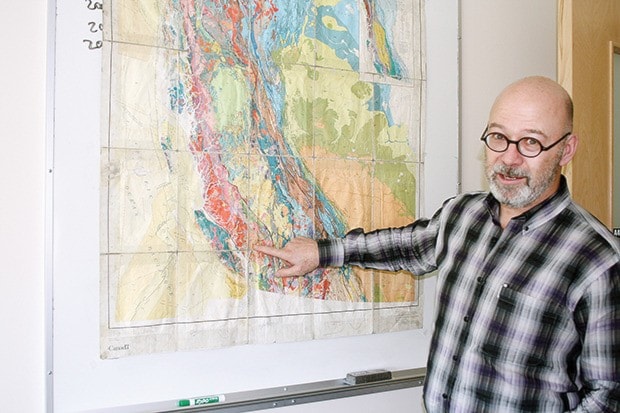Three hundred and fifteen years and counting.
On Jan. 26, 1700 one of the world’s largest earthquakes occurred off the west coast of Vancouver Island. The undersea Cascadia thrust fault ruptured along a 1,000-kilometre length, from mid Vancouver Island to northern California, producing a megathrust earthquake with an estimated magnitude of 8.7.
“We know that these earthquakes do occur in a cyclic fashion so there is going to be another megaquake,” said Stephen Johnston, director of the School of Earth and Ocean Sciences at the University of Victoria.
He said it’s impossible to accurately predict when the next megaquake will hit but they occur in cycles of between 300 and 700 years.
“What a lot of research is going into of late is trying to pin down whether it’s closer to 300 years, in which case we should start being concerned, or if it’s closer to 700 years, in which case we can relax a bit,” said Johnston.
The earthquake in 1700 collapsed houses of the Cowichan people on Vancouver Island and caused numerous landslides and a tsunami that swept across the Pacific, causing devastation in Japan.
According to Natural Resources Canada, the shaking from the earthquake was so violent on Vancouver Island that people could not stand and lasted so long it made them sick. The tsunami completely destroyed the winter village of the Pachena Bay people, leaving no survivors.
Geological evidence indicates that there have been 13 megaquakes over the past 6,000 years.
In contrast, the earthquake that struck northeast of Tofino on Jan. 8 was a magnitude 4.8, the largest onshore quake to have hit the region since 2000.
Johnston said there’s a big difference between onshore quakes like the one that struck near Tofino and the megaquakes that occur offshore, typically at the subduction zone.
“Usually the ones offshore are hugely more powerful. For example, the 1700 megaquake was probably on the order of 35,000 times more powerful than that Tofino earthquake, so it’s an enormous difference in power.”
And it’s the offshore quakes that give rise to tsunamis, which are typically responsible for the greatest loss of life.
Johnston said the fault responsible for the 1700 quake lies about 100 kilometres west of Port Renfrew. “And that is the same fault that will rupture again and cause the next megaquake.”
The extent of the devastation caused by that megaquake remains unclear.
“There would be a huge tsunami and Port Alberni and all the other west coast towns would be at risk,” said Johnston. “I think it’s obvious Tofino, much of it, would be inundated. Shaking is going to be a problem and old buildings that are not seismically upgraded – you can think of brick buildings in downtown Victoria that were built a long time ago – they would be liable to be heavily damaged.”
He said those living closer to the west coast will likely see more violent shaking but a lot of local issues will also come into play.
“If you’re built, and much of Victoria is built, on bedrock, then there won’t be such severe shaking. But if you’re built on recent sediments – think or regions around here where it’s very flat lying and muddy – those are lake beds that formed 10,000 years ago and they will shake like a bowl of jelly.”
But Johnston said a smaller quake like the one that struck Tofino can prove to be just as deadly as a megaquake.
“That’s the bigger concern, not the megaquake but something like the earthquake that took place near Tofino except maybe a little bit stronger than that.”
He pointed to the 6.3 magnitude quake that rocked Christchurch, New Zealand in 2011, resulting in 185 deaths.
“People die in magnitude 4 earthquakes and they don’t die because of the shaking, they die because a wall falls on them or something like that.”
Very few earthquakes have been centred around Victoria. Johnston recalls a magnitude 2 quake hitting Langford a year or two ago, “but it was so tiny that even people standing right on top of it couldn’t feel it.”
He said the Nisqually earthquake that struck south of Seattle in 2001 caused significant tremors felt in Victoria. The aftermath of that quake has left Victoria reasonably well prepared.
“We’ve had all of our public schools and a lot of the buildings at UVic and downtown seismically upgraded since then because we did have a good shake and it gave us a little taste of what might come.”
Johnston said Island residents would be well-advised to have a plan in place in the event of a large earthquake but admits that’s not something he’s put a lot of thought into.
“It’s something that you can’t get out of your mind but at the same time we’re all pretty happily living here and I’m not getting ready to move,” he said.
editor@oakbaynews.com
